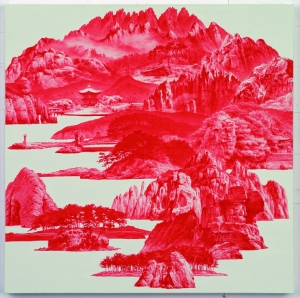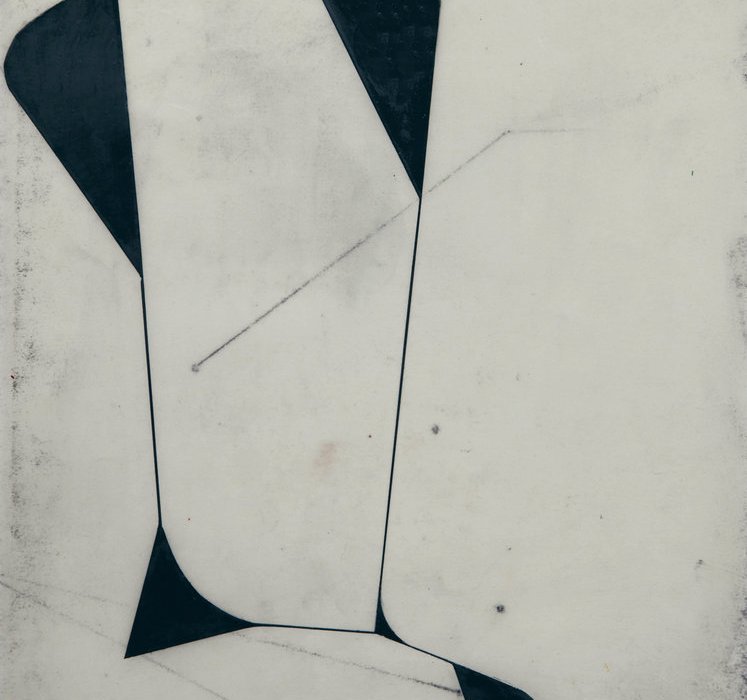Choi & Lager is one of the few galleries in Cologne to strongly focus on Korean art. It was founded in 2006 by Jari Lager and sisters Sunhee and Jinhee Choi who having been working together for over a decade to promote Korean artists within Europe. Their latest exhibition is their most ambitious to date, currently on view in the Michael Horbach Foundation, ‘Have A Good Day Mr Kim!’, features 15 Korean contemporary artists who have all caught the eye of the gallery team at some point during the last ten years. The show presents a wealth of talent from both established and emerging Korean artists, pushing to the forefront a nation whose art scene is still striving for international status.
I spoke to Gallery Director and Manager Jinhee Choi about the show:
Frederica Miller: Why is it important for Choi & Lager to promote contemporary Korean art within Europe?
Jinhee Choi: Because we, I mean Jari Lager, Sunhee Choi and I, are firm believers in the quality of Korean contemporary art and the sad reality is that there is still little opportunity for Korean artists to gain international recognition. Since 2002 we have come across a wealth of Korean contemporary artists however there are still few galleries or institutions that support and promote them in The West. That is the reason why we decided to show so many artists in this latest exhibition, we even had to narrow the numbers down from the original list. Having been brought up in Korea and now living in Europe Sunhee and I feel a duty to promote these artists and together with Jari, who has a deep interest and passion for Korean art, we aim to bridge the gap between Korea and Europe.

Frederica Miller: The exhibition’s title ‘Have A Good Day, Mr. Kim!’ suggests a sense of ironic self-reflectivity, would you say that this is a common attitude amongst current Korean artists?
Jinhee Choi: Of course it is an ironic title that contains a lot of interpretations. Hyungkoo Lee is a good example of an artist that deals with this theme of self-reflectivity, his work ‘Ridicularis’ that we have included in the show was inspired by the time that he spent studying in The States. Coming to The US from Korea he was immediately struck by how animated people were; their body language and gestures were larger than he was used to. Feeling shy and overwhelmed his initial reaction was to make himself a pair of oversized hands to wear, like a cartoon. He then began to consider what cartoons would look like if they had human or animal anatomy which is how he began his ‘Animatus’ series. This piece was shown in the Korean pavilion at the 2007 Venice Biennale and it’s a good example of a Korean artist reflecting on the culture shock that he and many Koreans experience when working or studying abroad.

Frederica Miller: Going back to the title why did you choose Xooang Choi’s sculpture as the main image for the exhibition?
Jinhee Choi: We chose this sculpture because it fits precisely to the title and concept of the exhibition.The sculpture looks exactly like ‘Mr Kim’ that is to say the everyday Korean businessman; the man that you see on the subway or in the street. The figure’s blurred face and the tense body language symbolises the kind of anonymity, that comes from living in a big metropole and working hard. Korea is one of the hardest working countries in the OECD ranking, so the tension that you see in his hands is very real. Korea has developed at an unbelievable speed over the last years and every Korean individual is somehow suffering the consequences of this rapid development. We chose this sculpture because whilst it represents the everyday reality of Koreans it simultaneously represents all people suffering under societal pressures regardless as to where they live.
Frederica Miller: What kind of social problems are people in Korea currently experiencing?
Jinhee Choi: There is a lot of competition amongst people, it begins from childhood upwards; you have to be polite to your parents, you have to get good grades at school, and then you have to get a good position at work. There are a lot of traditional duties as well as social pressure from modern society. A common problem is that you have to work so much that you seldom have free time for yourself. So you are in a very strained society but you have no time to yourself to think about it.
Frederica Miller: And how do artists fit into this ‘strained society’?
Jinhee Choi: I would say that they have a particular role and a particular reputation in Korea. Artists are very respected people. Although there is also definitely a strong sense of competition amongst Korean artists. In terms of society artists have an important role, the Korean people don’t generally have time to reflect on their life or their circumstances, whereas artists always pose the questions: What’s going on? What are you doing? What is the meaning of your life? And because of this it’s especially important to have those artists in Korea.

Frederica Miller: The exhibition represents a mix of artists; some have studied in Korea and others in Europe, seeing as the show includes artists working from both these places, do you see a difference in the practice and concerns of the artists depending on where they are based?
Jinhee Choi: Firstly there are a lot of Korean artists in Europe and because we are located here we got to know them more easily than Korean artists based only in Korea. That said, we strongly believe that such artists can produce really interesting work because they have experienced several identities. They have grown up in Korea but they have accepted and adapted to European culture. Although in many ways they are not different from contemporary European artists there is still something inherently Korean about their work.


Frederica Miller: Could you explain to me the work of Paris-based artist Stella Sujun within this context?
Jinhee Choi: Stella Sujun is one of the youngest artists in this show and has a lot of potential to grow. Her watercolour series ‘The Sick Rose’ is an immediate reference to European culture as it takes its title from a William Blake poem. The medium of watercolour is also not a Korean tradition. On the other hand there is a meticulousness to her work that could be understood as distinctly Korean. She worked on this project daily, producing 200 watercolours in total, so the ones that you see here are the selected few. Furthermore her pictures contain a mix of self-made symbols and mythologies that seem to be influenced by both Eastern and Western cultures. She also deals with anatomy, sickness and surgery, themes linked to a car crash that she experienced as a child.
One of the reasons that we have chosen to promote Korean artists like Stella is that they work very precisely. As you can see the finish to the works on display here are almost perfect and that is important for Korean artists. The interesting thing about artists like Stella who have studied outside of Korea is that as well as being concerned with perfect presentation they have also accepted a free European style of painting or drawing, and therefore they possess a powerful mix of influences from these two cultures.
Frederica Miller: The relationship between North and South Korea is notoriously tense, a tension that artist Seahyun Lee seems to explore in his bright red landscape paintings, please can you explain the process behind these works?
Jinhee Choi: Every man Korea has to do two years of military service, and Seahyun Lee did his at the border between North and South Korea. Every night it was his duty to keep watch on the border with infrared-binoculars. He found the landscape so beautiful and so calm in the infrared light, that despite the official war between North and South Korea this untouched zone made him nostalgic for the countryside that he had grown up in. After his military service he began to paint the landscape that he had seen whilst on duty. Although the mountains of North and South Korea are idyllically depicted in his paintings the remarkable red adds an aspect of critical disquiet to the works.

Frederica Miller: As someone dealing with Korean artists what do you know, if anything, about the existence of an art scene in North Korea?
Jinhee Choi: It is extremely difficult to say what is going on in North Korea, especially in the art scene. There was an exhibition of North Korean artists in Vienna a couple years ago and the works were all propaganda about the North Korean dictator or ideology. I doubt that there exists so-called ‘contemporary art’ there. I believe that people in North Korea would understand something completely different by the word ‘art.’
Frederica Miller: Where do you see ‘Have a good day Mr.Kim!’ going? Are you hoping to take the exhibition elsewhere in the future?
Jinhee Choi: Yes. We are very proud to say that ‘Have a good day Mr.Kim!’ will be on view at Vestfossen Kunstmuseum, Norway in an extended scale next year. We are keen to promote these artists as much as possible across Europe, and in the future we also hope to be able to show it at a German Kunstverein.


The exhibition is on view at The Michael Horbach Foundation until August 21st 2015
Featured Artists:
bekgin, Hyungkoo Lee, Ji In Park, Jinyoung Yu, Jukhee Kwon, Seahyun Lee, Soonhak Kwon, Xooang Choi, Yongbaek Lee, Yoonsuk Choi, Younghun Kim, Stella Sujin, Sungpil Chae, Meekyoung Shin, Leenam Lee
Photos: Courtesy of Gallery Choi & Lager



















